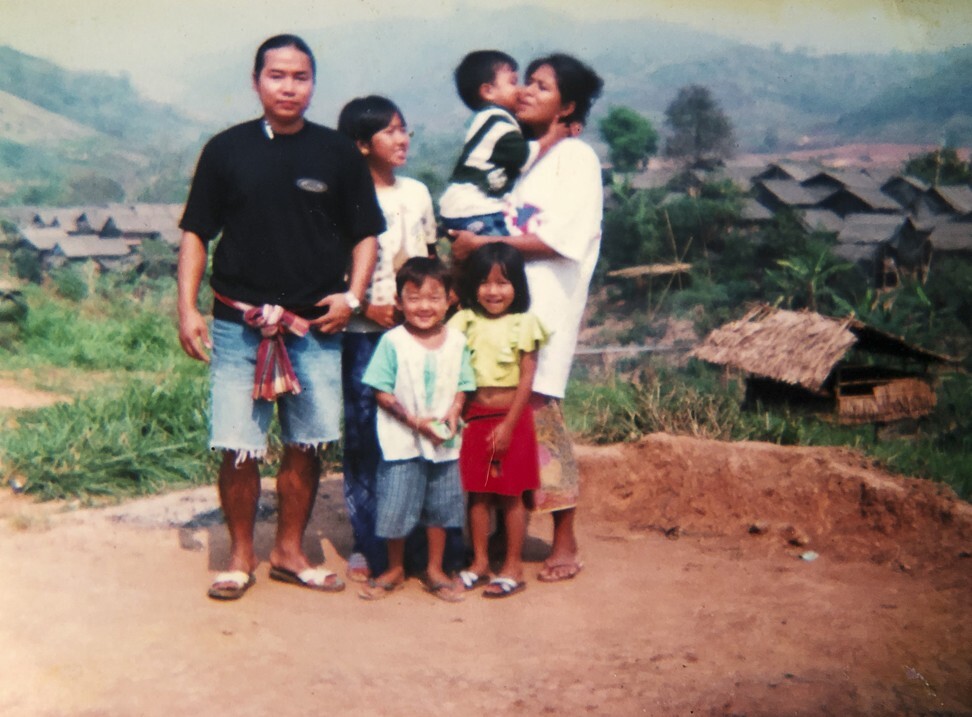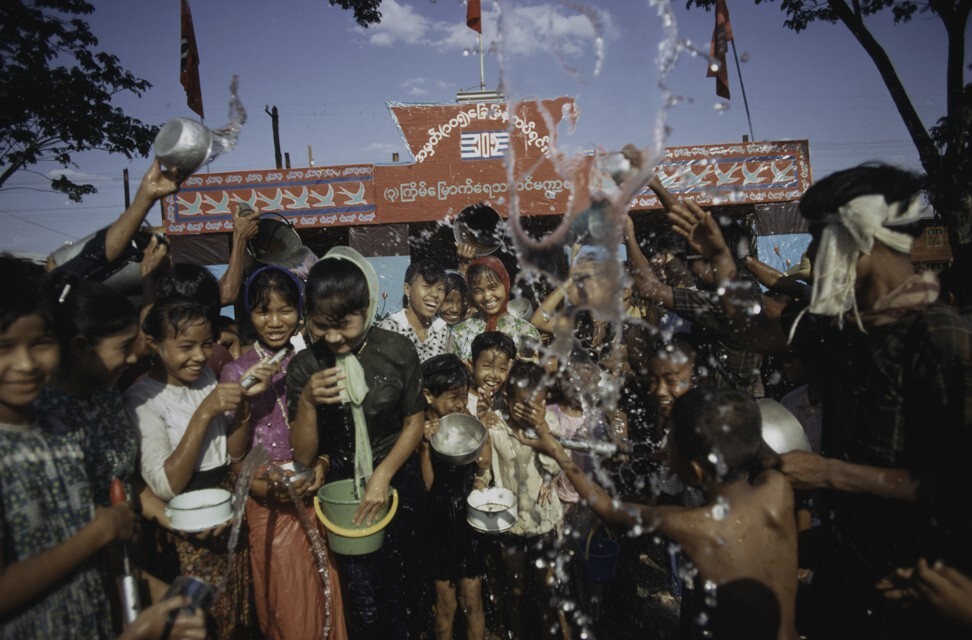
Burmese food expert on her ‘unusual life’ – she met her parents when she was 12, emigrated to Australia, then returned to Myanmar and opened a restaurant
- Born on the eve of popular revolt in Burma in 1988, Hnin Yee Htun did not see her parents for 12 years until they were reunited in a refugee camp in Thailand
- Educated in Australia, she went back to army-ruled Myanmar, and opened a restaurant; she’s now helped introduce a taste of Burmese cuisine to a friend’s restaurant in Hong Kong
On August 6, 1988, a girl was born in Mawlamyine, southern Burma, but the joy of the moment was not to last for long.
Two days later, the Southeast Asian country was plunged into anarchy as crowds of protesters – incensed by economic mismanagement and political oppression – took to the streets. Thousands suffered in the subsequent crackdown, and the country, renamed Myanmar in 1989, entered one of the darkest periods of its history.
For Hnin Yee Htun – the girl born on the cusp of the so-called 8888 Uprising – it was the start of a precarious and sometimes perilous existence characterised by long years of separation from her parents, who had been forced to flee.
“My father, Htun Htun Lay, has never really spoken to me much about what went on in 1988, but I do know he was deeply involved in the All Burma Students’ Democratic Front, which was also known as the students’ army,” says Hnin. “Both my parents had to go into hiding, and they eventually made it across the border into Thailand. As I was tiny, they left me behind with my mother’s mother, and she brought me up.”

Hnin’s early life was a protracted odyssey from semi-orphan to penniless refugee to stranger in a foreign land. Next month, her journey reaches a watershed when a new restaurant opens in Hong Kong’s NoHo nightlife district. In her role as culinary consultant at Club Rangoon, Hnin has helped inject the flavours of dishes from her homeland that she introduced to head chef Karisa Cheque.
While Hnin was relatively safe as a baby living with her grandmother in Mawlamyine, the rest of the country was in uproar.
Hong Kong’s first legally employed refugee on allowing asylum seekers to work
The military seized power and troops roamed the streets, firing their weapons indiscriminately. Human rights observers estimate the army slaughtered more than 1,000 students, monks and schoolchildren within a week of taking control. By the end of 1988, it was calculated the body count had reached 10,000.
“Most of the men on my dad’s side of the family were involved in the protests, and one of my uncles was sent to prison,” says Hnin. “But there weren’t really any activists on my mum’s side, and the authorities didn’t hassle me or my grandmother … I didn’t really miss my parents, as I never really knew them, although I’d seen their wedding photos. And my grandmother gave me all the love and care I could want until she died in 1999.”
Hnin then moved to Yangon, at the time Myanmar’s capital, to live with relatives, and led a relatively normal existence. But, one afternoon at school, her life took a sudden and unexpected turn.

“One of my uncles came in to collect me, and we set off for the border,” says Hnin. “I was 12, and it just seemed like some sort of adventure. Then it got weird as we stopped and I was given a really short haircut. He told me I needed to look as if I was a boy, as we were headed into bandit country and if I looked like a girl I might get raped. That was when I realised it wasn’t a straightforward adventure.”
After crossing the Thai border without mishap, Hnin finally reached the refugee camp where her parents were living. It was a moment that has been etched in her memory ever since.
“I knew what they looked like, but the first time I really saw them we didn’t speak at first. Then my dad reached down and picked me up in his arms, held me tight and whispered ‘you’re home’. That’s all I needed to hear.”

Safe at last from the military in Myanmar, Hnin’s life entered a new phase as one of dozens of refugee children living in the camp. Her father was well set up in the hierarchy, and in search of lasting sanctuary he embarked on the laborious process of moving his young family to the United States.
However, it was not to be. On September 11, 2001, terrorists struck at the US, bringing down the World Trade Centre in New York and convulsing the rest of the world.
For Hnin and her family, it was a bitter blow as they tried to come to terms with the possibility of being stuck in a refugee camp indefinitely. “Then we had a stroke of luck, as our case got picked up by the Australian government, who sponsored us in 2002,” says Hnin.
“Having lived in the tropics all our lives, and having occupied fairly basic accommodation in Thailand for months on end, arriving in a suburb in Melbourne where a house had been prepared for us was a major culture shock.
I went back in 2011 – the first of my family to make the journey home to Yangon. It was an eye-opener for sure, as I felt like a foreigner in my own country
“And it was winter … We’d never experienced cold like that before, so we’d go to the supermarket to do our shopping, completely bundled up and looking like a walking train wreck,” she adds.
“A friend had arranged some Asian cooking utensils for us, and within the first week my mum was making kangaroo curry, so you could say we started to fit in quite well.”
Hnin’s third metamorphosis was the most rapid and radical of her short life. Within six months of being in Melbourne her English was workable, if not fluent, and she had adapted well to life at high school.
“The real beauty of it was its being so multicultural – I never felt like I was left out and it was easy to become part of the group,” says Hnin.

She progressed from high school to Melbourne’s RMIT University, where she enrolled in a furniture design and technology course, but realised after two years that she was on the wrong track and transferred to the William Angliss Institute, where she took up commercial cooking. Although she subsequently opened a successful restaurant, she came to realise that her heart lay in Myanmar, not Melbourne.
“I went back in 2011 – the first of my family to make the journey home to Yangon,” says Hnin.
“It was an eye-opener for sure, as I felt like a foreigner in my own country. The military were still in power, I wasn’t hassled in any way, but I did feel I should take precautions, and although I visited my relatives I stayed in a hotel. So that was a bit of an adjustment after free-and-easy Australia.”

Four years later Hnin was back in Yangon in time to experience the Thingyan new year festival, when residents take to the streets to pelt each other with water in a joyful free-for-all that stretches over several days. Sensing a new political and economic spirit in the air, she drew up plans for a downtown bistro, and it opened just days after the National League for Democracy triumphed in the elections of November, 2015.
Once her restaurant was running successfully, Hnin sold up and began collaborating with a family friend who was setting up a Burmese restaurant, Club Rangoon, in Hong Kong, due to open on July 9.
“I’d been to Hnin’s place in Yangon, and was really impressed. So when I was looking for someone to put together the menu for my restaurant, she was the obvious choice,” says Nelson Htoo, Club Rangoon’s founder.

The Club Rangoon menu will feature Burmese favourites including lahpet thoke, a pickled tea-leaf salad, mohinga, and tofu nway – silky tofu soup made with split peas.
Hnin is currently working on a new restaurant in Yangon focusing on regional cuisine, and relishing her new-found role as a culinary adviser.

“I’ve had a pretty unusual life by some standards, but what to me has always been normal has amazed many people I’ve told about it,” says Hnin. “Because of what I went through, now I can be anywhere and adapt to any situation, whatever comes my way.”

